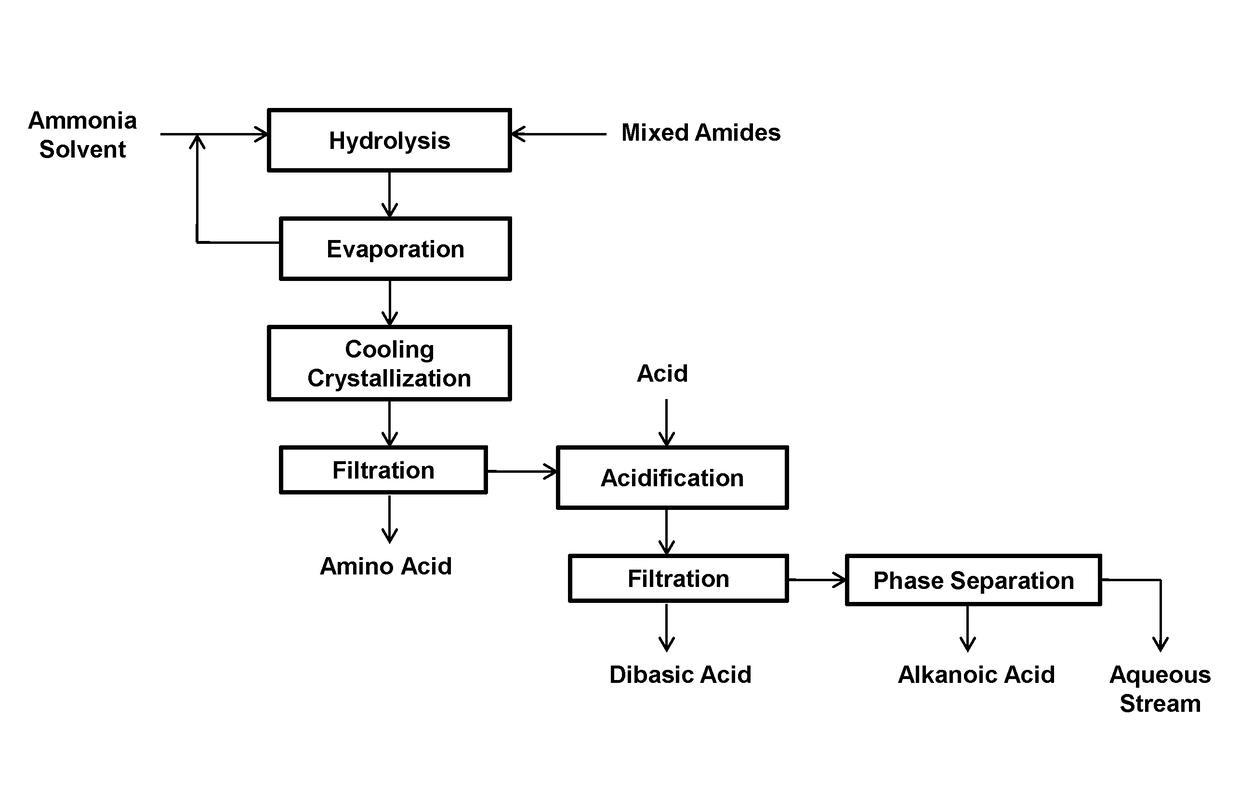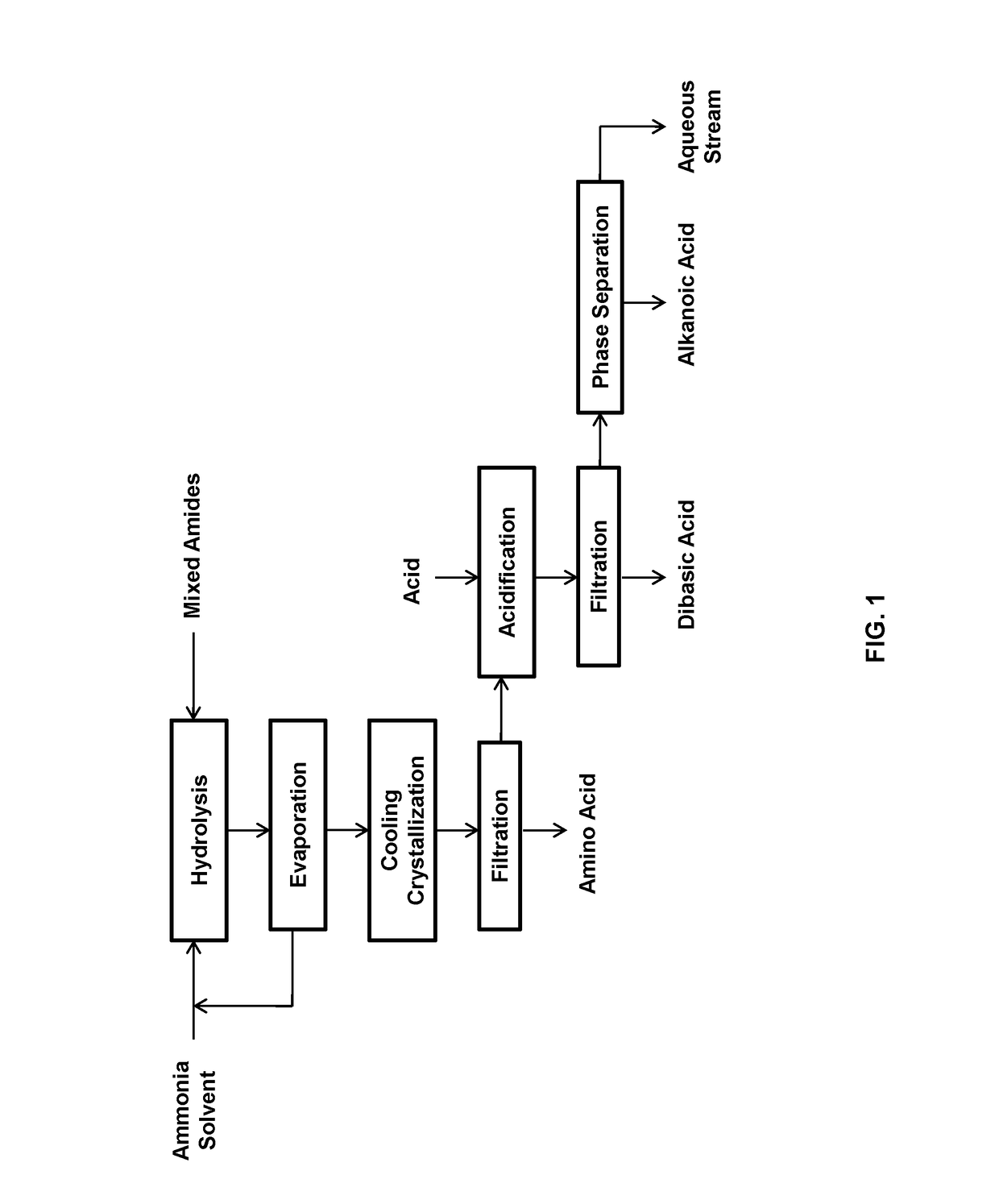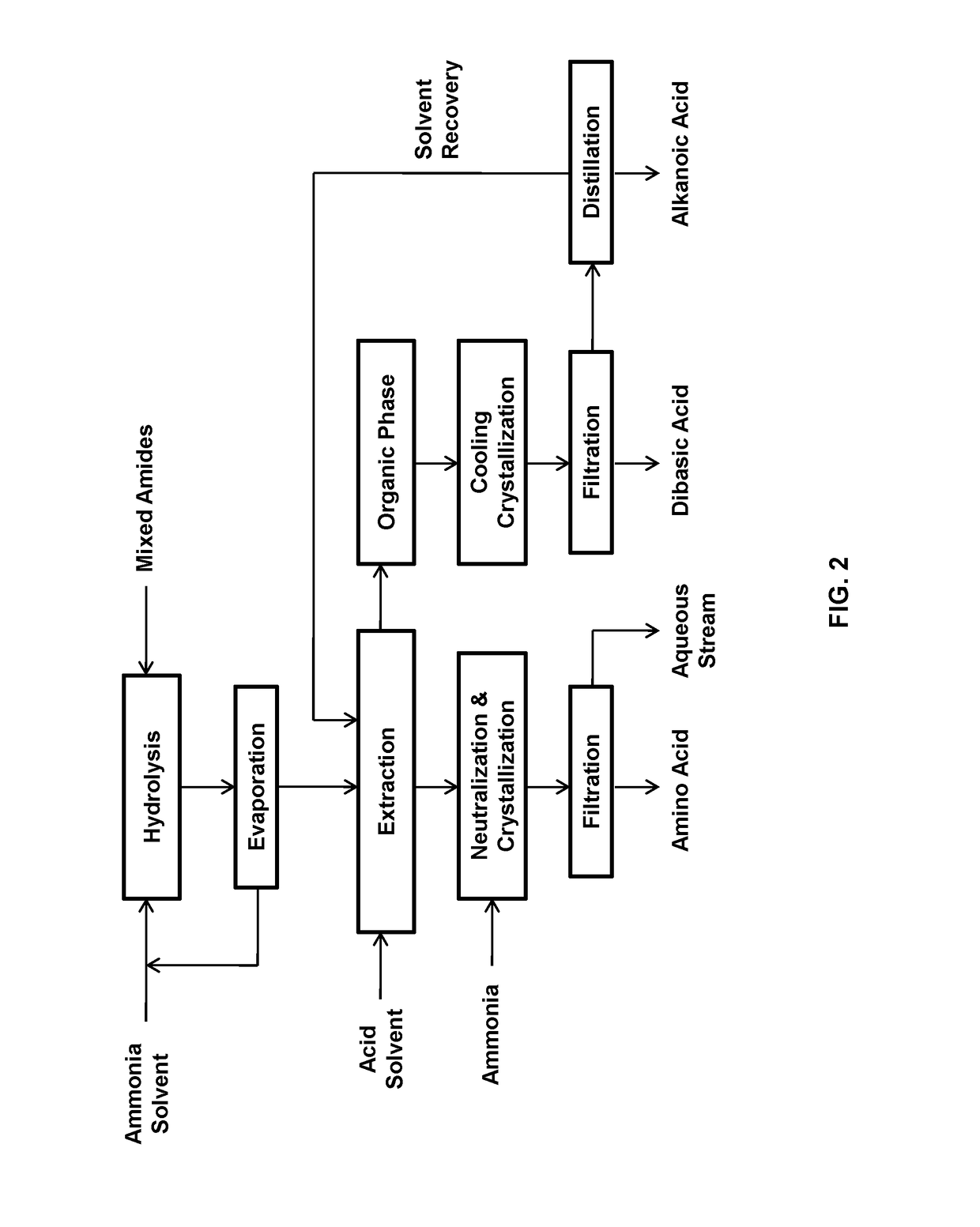Process for producing long chain amino acids and dibasic acids
a technology of dibasic acid and long chain amino acid, which is applied in the preparation of amino compounds, carboxylic acid amide preparation, and separation/purification of carboxylic acid amides, etc. it can solve the problems of large amount of sodium sulfate generated in the production process, excessively long time to complete hydrolysis with an acid, and high cos
- Summary
- Abstract
- Description
- Claims
- Application Information
AI Technical Summary
Benefits of technology
Problems solved by technology
Method used
Image
Examples
example 1
[0051]This example relates to the production and separation of 11-aminoundecanoic acid, dodecanedioic acid, hexylamine, heptanoic acid, and stearic acid from their mixture obtained from the ammonium hydroxide hydrolysis of the mixed amide derivatives.
[0052]A mixture of the products was obtained by hydrolyzing 150 g of the mixed amide derivatives prepared from methyl 12-ketostearate according to WO2017 / 088218 with 1200 mL of 10% ammonium hydroxide.
[0053]The mixed amide methyl esters was suspended in 1200 mL of 10% ammonium hydroxide in a 2 L autoclave and heated to 225° C. for 5 hours under a pressure of 65 bars. After cooling, the suspension was transferred to a 2 L flask and distilled with a 2.5×30 cm vacuum jacketed column packed with porcelain berl saddles to 101° C. to remove excess ammonia. The suspension became neutral at a pH in the range from 7 to 8 and cooled to room temperature. The precipitated 11-amminoundecanoic acid was recovered by filtration and washing with deionize...
example 2
[0059]This example relates to the production and separation of 11-aminoundecanoic acid, dodecanedioic acid, hexylamine, heptanoic acid, and stearic acid from their mixture obtained from the ammonium hydroxide hydrolysis of the mixed amide derivatives in 50% ethanol.
[0060]A mixture of the products was obtained by hydrolyzing 150 g of the mixed amide derivatives prepared from methyl 12-ketostearate according to WO2017 / 088218 with 1200 mL of 10% ammonium hydroxide containing 50% ethanol.
[0061]The mixed amide methyl esters were suspended in 1200 mL of 10% ammonium hydroxide containing 50% ethanol in a 2 L autoclave and heated to 225° C. for 5 hours. The suspension was transferred to a 2 L flask and distilled with a 2.5×30 cm vacuum jacketed column packed with porcelain berl saddles to 101° C. to remove excess ammonia and ethanol. The suspension became neutral at a pH of 7-8 and cooled to room temperature.
[0062]To the suspension were added 75 g of sulfuric acid and 800 mL of toluene. The...
PUM
| Property | Measurement | Unit |
|---|---|---|
| temperature | aaaaa | aaaaa |
| temperature | aaaaa | aaaaa |
| pressure | aaaaa | aaaaa |
Abstract
Description
Claims
Application Information
 Login to View More
Login to View More - R&D
- Intellectual Property
- Life Sciences
- Materials
- Tech Scout
- Unparalleled Data Quality
- Higher Quality Content
- 60% Fewer Hallucinations
Browse by: Latest US Patents, China's latest patents, Technical Efficacy Thesaurus, Application Domain, Technology Topic, Popular Technical Reports.
© 2025 PatSnap. All rights reserved.Legal|Privacy policy|Modern Slavery Act Transparency Statement|Sitemap|About US| Contact US: help@patsnap.com



